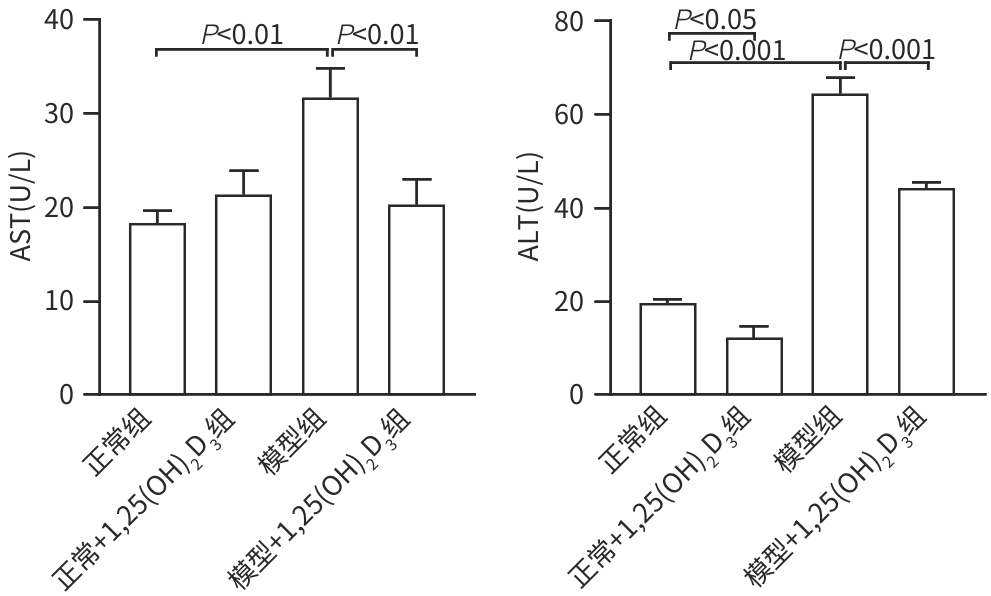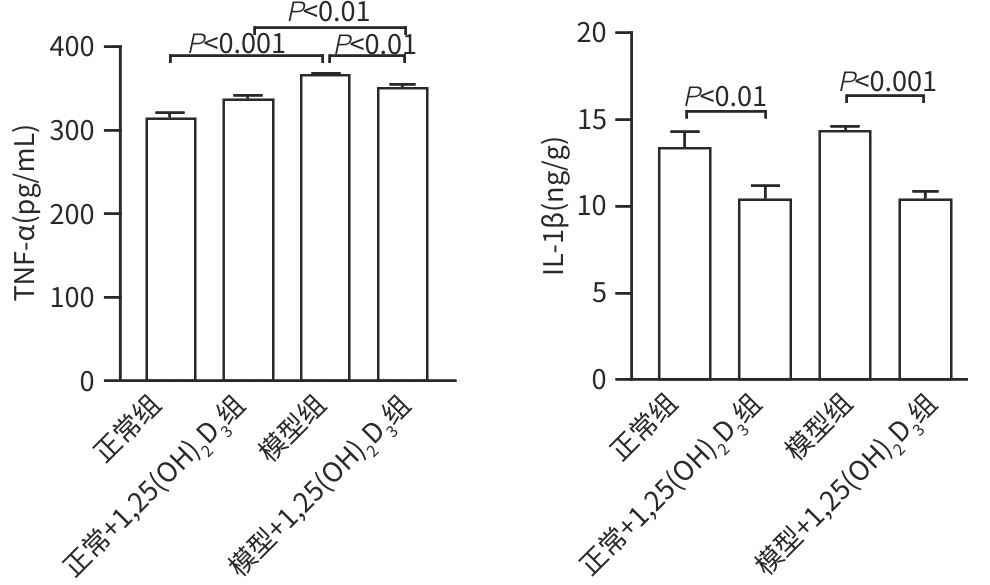| [1] |
MA KF, CHEN YH, LIANG XG, et al. Inhibition of 5-lipoxygenase inhibitor zileuton in high-fat diet-induced nonalcoholic fatty liver disease progression model[J]. Iran J Basic Med Sci, 2017, 20( 11): 1207- 1212. DOI: 10.22038/IJBMS.2017.9482. |
| [2] |
YOUNOSSI ZM, KOENIG AB, ABDELATIF D, et al. Global epidemiology of nonalcoholic fatty liver disease-Meta-analytic assessment of prevalence, incidence, and outcomes[J]. Hepatology, 2016, 64( 1): 73- 84. DOI: 10.1002/hep.28431. |
| [3] |
TAKEGOSHI K, HONDA M, OKADA H, et al. Branched-chain amino acids prevent hepatic fibrosis and development of hepatocellular carcinoma in a non-alcoholic steatohepatitis mouse model[J]. Oncotarget, 2017, 8( 11): 18191- 18205. DOI: 10.18632/oncotarget.15304. |
| [4] |
MIURA K, ISHIOKA M, IIJIMA K. The roles of the gut microbiota and toll-like receptors in obesity and nonalcoholic fatty liver disease[J]. J Obes Metab Syndr, 2017, 26( 2): 86- 96. DOI: 10.7570/jomes.2017.26.2.86. |
| [5] |
REMMERIE A, MARTENS L, SCOTT CL. Macrophage subsets in obesity, aligning the liver and adipose tissue[J]. Front Endocrinol(Lausanne), 2020, 11: 259. DOI: 10.3389/fendo.2020.00259. |
| [6] |
DUARTE N, COELHO IC, PATARRÃO RS, et al. How inflammation impinges on NAFLD: A role for kupffer cells[J]. Biomed Res Int, 2015, 2015: 984578. DOI: 10.1155/2015/984578. |
| [7] |
RANNOU E, FRANÇOIS A, TOULLEC A, et al. In vivo evidence for an endothelium-dependent mechanism in radiation-induced normal tissue injury[J]. Sci Rep, 2015, 5: 15738. DOI: 10.1038/srep15738. |
| [8] |
TANG DS, CAO F, YAN CS, et al. Extracellular vesicle/macrophage axis: Potential targets for inflammatory disease intervention[J]. Front Immunol, 2022, 13: 705472. DOI: 10.3389/fimmu.2022.705472. |
| [9] |
NI YH, NAGASHIMADA M, ZHAN LL, et al. Prevention and reversal of lipotoxicity-induced hepatic insulin resistance and steatohepatitis in mice by an antioxidant carotenoid, β-cryptoxanthin[J]. Endocrinology, 2015, 156( 3): 987- 999. DOI: 10.1210/en.2014-1776. |
| [10] |
HAN H, CUI M, YOU X, et al. A role of 1, 25(OH) 2D 3 supplementation in rats with nonalcoholic steatohepatitis induced by choline-deficient diet[J]. Nutr Metab Cardiovasc Dis, 2015, 25( 6): 556- 561. DOI: 10.1016/j.numecd.2015.02.011. |
| [11] |
LUO WJ, XU QY, WANG Q, et al. Effect of modulation of PPAR-γ activity on Kupffer cells M1/M2 polarization in the development of non-alcoholic fatty liver disease[J]. Sci Rep, 2017, 7: 44612. DOI: 10.1038/srep44612. |
| [12] |
ZHANG XL, ZHOU M, GUO YF, et al. 1, 25-dihydroxyvitamin D₃ promotes high glucose-induced M1 macrophage switching to M2 via the VDR-PPARγ signaling pathway[J]. Biomed Res Int, 2015, 2015: 157834. DOI: 10.1155/2015/157834. |
| [13] |
European Association for the Study of the Liver, European Association for the Study of Diabetes, European Association for the Study of Obesity. EASL-EASD-EASO clinical practice guidelines for the management of non-alcoholic fatty liver disease[J]. J Hepatol, 2016, 64( 6): 1388- 1402. DOI: 10.1016/j.jhep.2015.11.004. |
| [14] |
BEDOSSA P, PATHOLOGY CONSORTIUM FLIP. Utility and appropriateness of the fatty liver inhibition of progression(FLIP) algorithm and steatosis, activity, and fibrosis(SAF) score in the evaluation of biopsies of nonalcoholic fatty liver disease[J]. Hepatology, 2014, 60( 2): 565- 575. DOI: 10.1002/hep.27173. |
| [15] |
YANG YM, WANG ZJ, MATSUDA M, et al. Inhibition of hyaluronan synthesis by 4-methylumbelliferone ameliorates non-alcoholic steatohepatitis in choline-deficient L-amino acid-defined diet-induced murine model[J]. Arch Pharm Res, 2021, 44( 2): 230- 240. DOI: 10.1007/s12272-021-01309-7. |
| [16] |
NAKANISHI K, KAJI K, KITADE M, et al. Exogenous administration of low-dose lipopolysaccharide potentiates liver fibrosis in a choline-deficient l-amino-acid-defined diet-induced murine steatohepatitis model[J]. Int J Mol Sci, 2019, 20( 11): 2724. DOI: 10.3390/ijms20112724. |
| [17] |
KUCSERA D, TÓTH VE, GERGŐ D, et al. Characterization of the CDAA diet-induced non-alcoholic steatohepatitis model: Sex-specific differences in inflammation, fibrosis, and cholesterol metabolism in middle-aged mice[J]. Front Physiol, 2021, 12: 609465. DOI: 10.3389/fphys.2021.609465. |
| [18] |
POVERO D, EGUCHI A, LI HY, et al. Circulating extracellular vesicles with specific proteome and liver microRNAs are potential biomarkers for liver injury in experimental fatty liver disease[J]. PLoS One, 2014, 9( 12): e113651. DOI: 10.1371/journal.pone.0113651. |
| [19] |
XU L, KITADE H, NI YH, et al. Roles of chemokines and chemokine receptors in obesity-associated insulin resistance and nonalcoholic fatty liver disease[J]. Biomolecules, 2015, 5( 3): 1563- 1579. DOI: 10.3390/biom5031563. |
| [20] |
VONGHIA L, MAGRONE T, VERRIJKEN A, et al. Peripheral and hepatic vein cytokine levels in correlation with non-alcoholic fatty liver disease(NAFLD)-related metabolic, histological, and haemodynamic features[J]. PLoS One, 2015, 10( 11): e0143380. DOI: 10.1371/journal.pone.0143380. |
| [21] |
CIMINI FA, BARCHETTA I, CAROTTI S, et al. Relationship between adipose tissue dysfunction, vitamin D deficiency and the pathogenesis of non-alcoholic fatty liver disease[J]. World J Gastroenterol, 2017, 23( 19): 3407- 3417. DOI: 10.3748/wjg.v23.i19.3407. |
| [22] |
NELSON JE, ROTH CL, WILSON LA, et al. Vitamin D deficiency is associated with increased risk of non-alcoholic steatohepatitis in adults with non-alcoholic fatty liver disease: Possible role for MAPK and NF-κB?[J]. Am J Gastroenterol, 2016, 111( 6): 852- 863. DOI: 10.1038/ajg.2016.51. |
| [23] |
ZHANG HW, LIU YM, FANG X, et al. Vitamin D 3 protects mice from diquat-induced oxidative stress through the NF- κB/Nrf2/HO-1 signaling pathway[J]. Oxid Med Cell Longev, 2021, 2021: 6776956. DOI: 10.1155/2021/6776956. |
| [24] |
KHEDER R, HOBKIRK J, SAEED Z, et al. Vitamin D 3 supplementation of a high fat high sugar diet ameliorates prediabetic phenotype in female LDLR -/- and LDLR +/+ mice[J]. Immun Inflamm Dis, 2017, 5( 2): 151- 162. DOI: 10.1002/iid3.154. |
| [25] |
REDA D, ELSHOPAKEY GE, ALBUKHARI TA, et al. Vitamin D3 alleviates nonalcoholic fatty liver disease in rats by inhibiting hepatic oxidative stress and inflammation via the SREBP-1-c/PPARα-NF-κB/IR-S2 signaling pathway[J]. Front Pharmacol, 2023, 14: 1164512. DOI: 10.3389/fphar.2023.1164512. |
| [26] |
YIN Y, YU ZW, XIA M, et al. Vitamin D attenuates high fat diet-induced hepatic steatosis in rats by modulating lipid metabolism[J]. Eur J Clin Invest, 2012, 42( 11): 1189- 1196. DOI: 10.1111/j.1365-2362.2012.02706.x. |
| [27] |
ZHANG XL, GUO YF, SONG ZX, et al. Vitamin D prevents podocyte injury via regulation of macrophage M1/M2 phenotype in diabetic nephropathy rats[J]. Endocrinology, 2014, 155( 12): 4939- 4950. DOI: 10.1210/en.2014-1020. |
| [28] |
MU YM, LI JT, KANG JH, et al. A lipid-based nanocarrier containing active vitamin D 3 ameliorates NASH in mice via direct and intestine-mediated effects on liver inflammation[J]. Biol Pharm Bull, 2020, 43( 9): 1413- 1420. DOI: 10.1248/bpb.b20-00432. |
| [29] |
SHAB-BIDAR S, NEYESTANI TR, DJAZAYERY A, et al. Improvement of vitamin D status resulted in amelioration of biomarkers of systemic inflammation in the subjects with type 2 diabetes[J]. Diabetes Metab Res Rev, 2012, 28( 5): 424- 430. DOI: 10.1002/dmrr.2290. |
| [30] |
KOMISARENKO YI, BOBRYK MI. Vitamin D deficiency and immune disorders in combined endocrine pathology[J]. Front Endocrinol(Lausanne), 2018, 9: 600. DOI: 10.3389/fendo.2018.00600. |














 DownLoad:
DownLoad:




